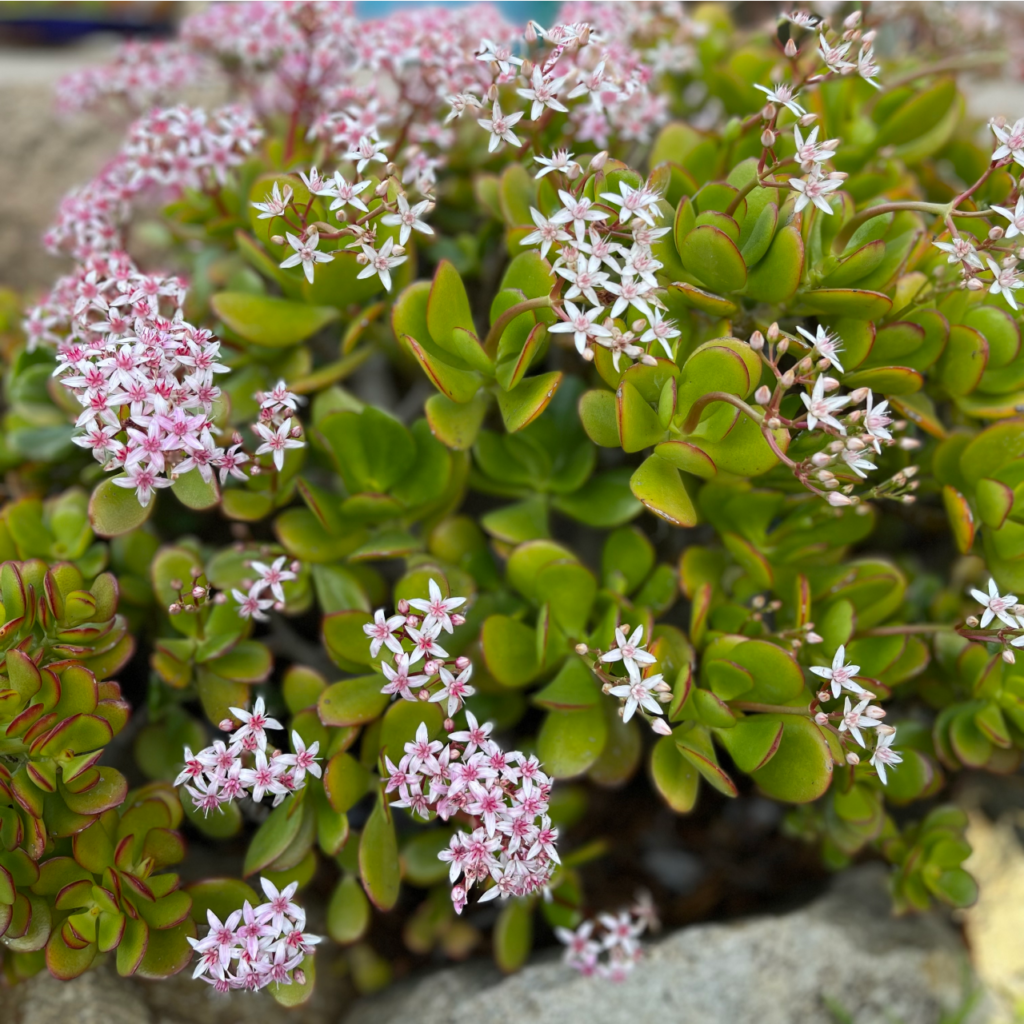Are you looking for an extremely low-maintenance, easy-to-care-for, and exotic-looking houseplant? Then look no further than the vast array of Jade plants or to some a money tree! There is a wide range of various varieties of this succulent available, so you’re guaranteed to find one that fits your style. In this blog post, we will explore seven of my favorite different types of Jade plants, which you can easily grow at home. Keep reading for more information on each variety, and be sure to check out the accompanying photos!
In this post, we will talk about these seven varieties of jade plants.
- Silver Dollar Jade (Crassula arborescens)
- Ripple Jade (Crassula Arborescens Undulatifolia)
- Red Coral Jade (Crassula Ovata Gollum)
- Pixie Jade (Crassula Ovata Pixie)
- Lemon and Lime Jade (Crassula Ovata Variegata)
- Hobbit Jade (Crassula Ovata Gollum)
- Pink flowering Jade (Crassula Ovata Pink)
Isn’t jade a gemstone? Yes and No! So what are Jade plants?
The jade plant, or Crassula ovata, is a species of succulent shrub native to South Africa. It has a long history of being associated with good luck and wealth in many cultures, and its unassuming appearance makes it an ideal choice for a houseplant. It has brightly colored leaves in shades of green and tinged with pinkish-red edges. Most jade plants also feature seasonal star-shaped white flowers.
These plants are easy to care for and make fairly low-maintenance additions to any home – despite their popularity, they don’t need much attention. The jade plant’s thick, glossy leaves store water like other succulents allowing them to survive in dry environments over extended periods of time! They can be left alone for a few weeks without any problems. In conclusion, the jade plant is both beautiful and practical; requiring little maintenance yet always making for a nice touch or conversation piece in your home. So if you’re looking for an “it”plant that provides lots of benefits with minimal effort required, look no further than the jade plant!
How to care for Jade plants
For any plant parent, caring for jade plants can be so rewarding! These plants are especially suited for newbie plant parents in the world of house plants. But new or old, there is something special about jade plants and we all find caring for them to be so rewarding! The key is understanding their needs and providing a well-balanced environment between yours and replicating their natural habitat. These hardy succulents originate from areas of South Africa, where they thrive in bright indoor light or bright sunlight, average humidity levels, and well-draining soil.
With a few simple tips on soil type, watering frequency, and direct sun exposure, we can ensure your jade plant has just what it needs to stay happy and healthy.
Potting Soil
It’s best to use well-draining soil that is suited for cacti and succulents. Look for a mix that contains sand, pumice, and lava rock to help with drainage; wet soil will quickly spell doom for your beloved little green friend!
Not sure where to begin with potting soils? Learn more about potting mediums here: DISH THE DIRT: WHAT YOU NEED TO KNOW FOR HEALTHY PLANTS!
Watering Requirements
During the active growing season (spring to summer months), water every 7-10 days or whenever the top inch or two of soil feels dry to the touch. During the winter months, it’s best to err on the side of caution and limit watering to once every three to four weeks. As with all cacti and succulents, it’s best to remove excess water to avoid root rot and prevent damage from too much water.
Lighting
As far as lighting goes, most jade plants flourish in the spectrum of bright indirect, light all the way up to direct sunlight or full sun. They can survive in fairly low lighting if kept dry most of the time. The key is to find a good spot where they are happy and leave them there. So if you place it on or near a windowsill to provide it with ample lighting, it will adjust to intense light and may drop leaves if moved into light shade. Or if your jade plants find happiness in bright indirect light, then don’t suddenly move it into full sun or risk burning those pretty little leaves.
Dont have enough natural light? Learn more about supplemental lighting here: GROW LIGHTS: WHY, WHEN AND HOW TO USE THEM
Pest and Problems
The jade plant is thought to bring luck and fortune to those that own it. However, this seemingly innocuous houseplant is not without its problems.
To protect your precious jade plant from infestation and promote new growth, you must pay close attention to signs of pests like fungal diseases, mealy bugs, scale and spider mites. Testing the soil for moisture before watering can help prevent root rot and stress on the plant. Also make sure your plant soil has good drainage. Lastly, a pruning schedule will help ensure optimal health of your jade plants’ foliage.
If all else fails, it’s important to note that fungicides and insecticides are often necessary for controlling pests and diseases of these beloved plants. With the right knowledge and care, your jade plant can promise a lifetime of good luck!
Propagation
Fortunately, Jade plants are super easy to propagate in a variety of ways as long as you provide it with the right environmental factors and enough light for it to thrive. Its best to propagate Jade Plants during the growing season and avoid doing so in the winter months. All you need for propagation is a pair of scissors or pruners and either a well draining potting mix or succulent growing medium. Below re step by step instructions for propagating your jade plant:
- Use your scissors to carefully snip off one or more pieces from the plant’s thick stems. Be sure not to snip your plant’s main stem.
- After you have your pieces, place them in either potting soil or just lay them down on the surface without burying them too deep in the soil.
- Lastly deeply water the stem cuttings into the soil.
For best results, make sure they are getting plenty of sunlight! Once they begin to grow roots and sprouts of leaves, transplant each piece into its own container with drainage holes. Regular watering (about once a week) will help your new jade plants establish themselves and thrive! With the right amount of love and attention, your jade collection is sure to expand and bring you joy for many years to come.
Have fun with your jade plant adventure and remember:
Take it slow – these resilient houseplants make great green companions for your home or space!
Time to explore these seven different Jade Plants
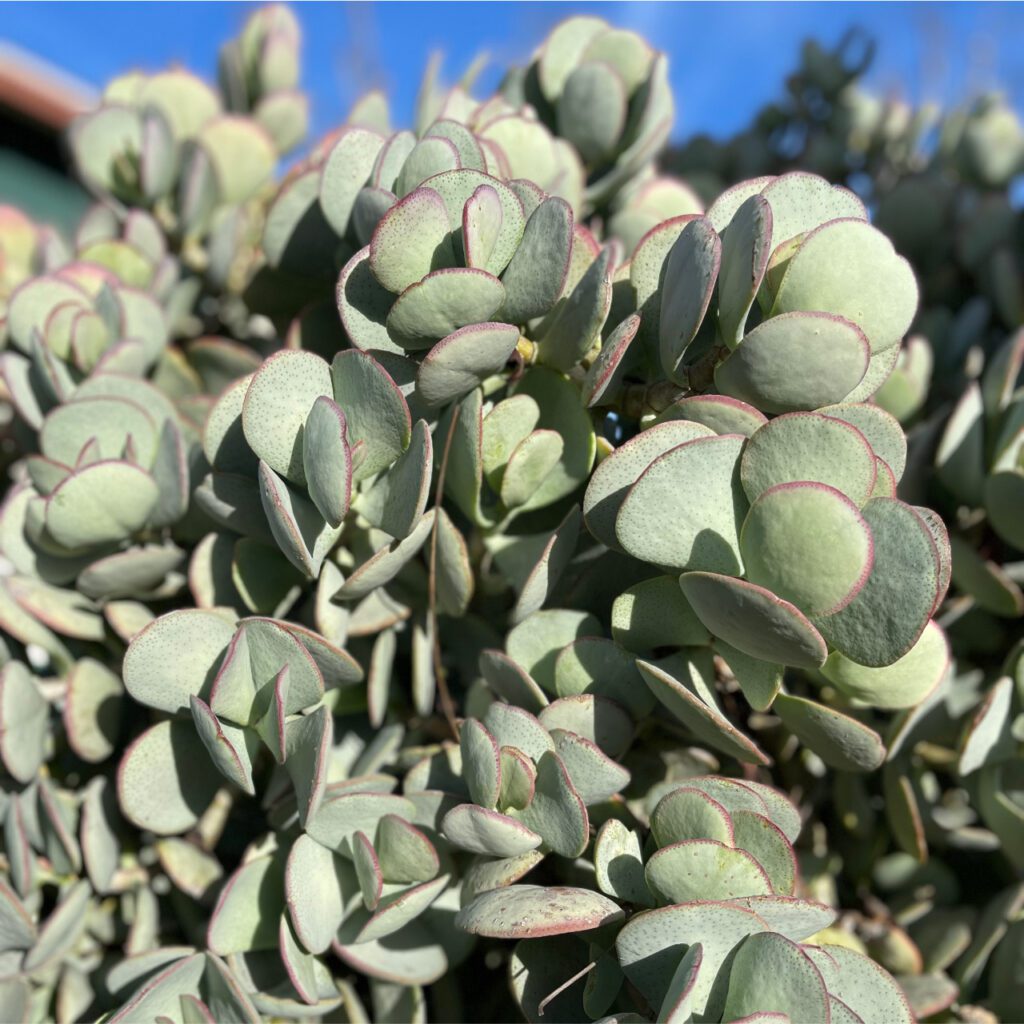

1. Silver Dollar Jade (Crassula arborescens)
For many, Crassula arborescens—better known as Silver Dollar Jade—is an easy-care houseplant with a compact growth habit and an adorable aesthetic. This succulent has thick fleshy gray-green circular leaves with red edging when grown in bright light; however, its foliage can turn solid green in lower light.
Small star-shaped flowers appear in spring to summer on arching stems, adding subtle beauty to the plant. While generally low maintenance, succulents shouldn’t be overwatered so it’s important to ensure the soil is completely dry between waterings. Happiest when kept at temperatures of 60 to 75 degrees Fahrenheit, Silver Dollar Jade is also quite tolerant of indoor humidity levels and should be fertilized every two weeks or so to maintain vibrant coloration and help it grow new roots. With a few basic care tips and plenty of admiration, this charming succulent is sure to bring lots of fun and intrigue into your home!
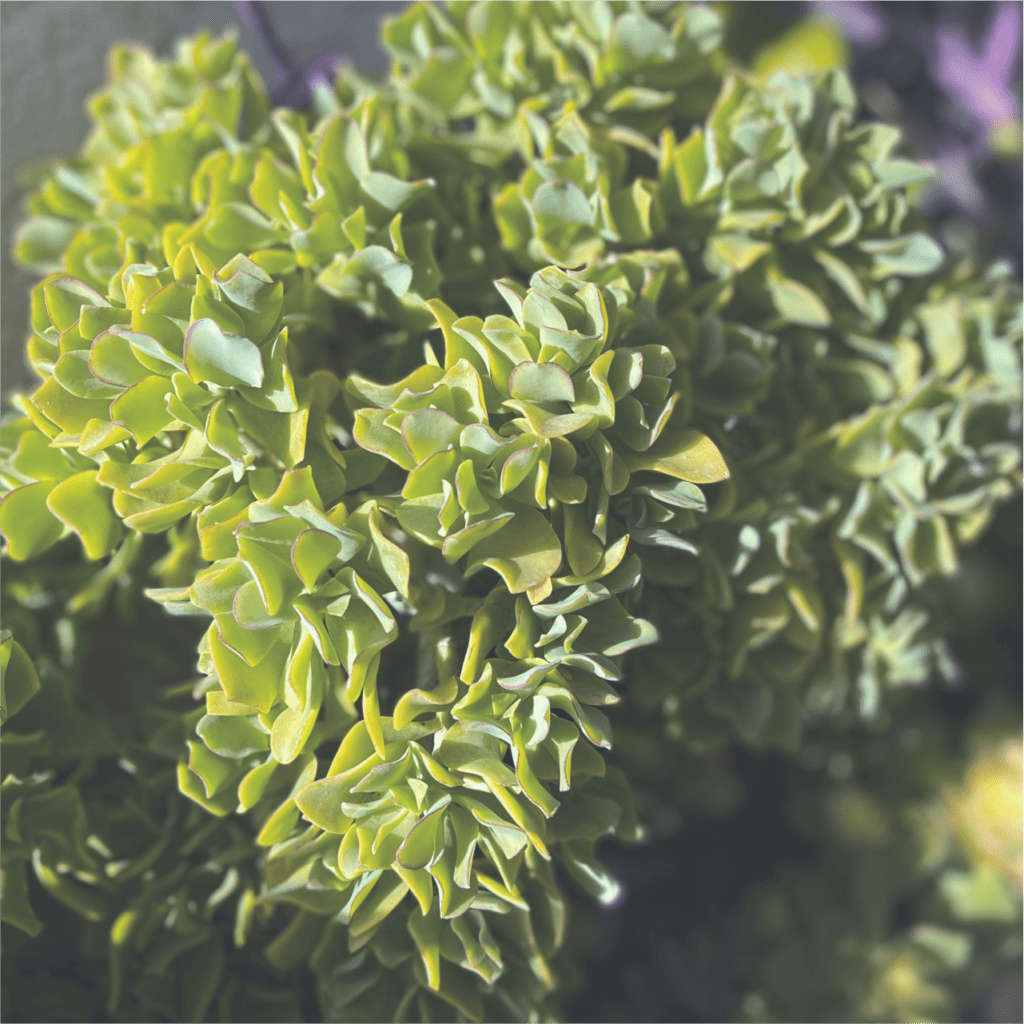

2. Ripple Jade (Crassula Arborescens Undulatifolia)
Ripple Jade, also known as Crassula Arborescens Undulatifolia, is a captivating succulent whose ornate foliage and cheery disposition are sure to bring life to any space. This low-maintenance plant has elongated, glossy leaves in intense emerald shades of green with striking reddish-brown tips that offer its unique wavy texture. Ripple Jade can be grown outdoors or indoors, however, its container should be placed in bright indirect sunlight to keep it happy and avoid over-exposure which may result in sunburn on its vibrant red tips and reddish tint leaves. Watering the succulent every 1 – 2 weeks would help it thrive; however, letting the soil dry out completely in between waterings will ensure that you don’t oversaturate it. With regular love and care for this evergreen perennial, your Ripple Jade will slowly blossom into a lush green carpet of waviness that is sure to delight!
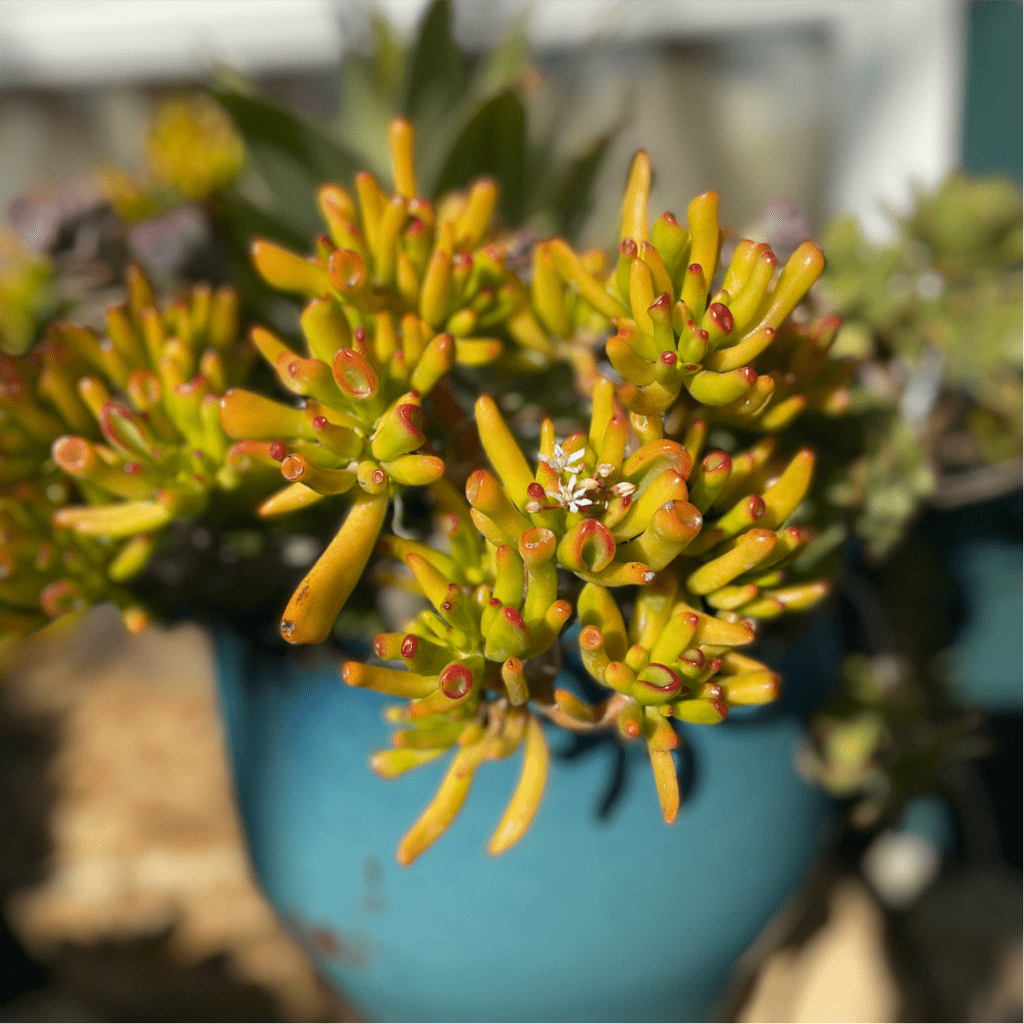

3. Red Coral Jade (Crassula Ovata Gollum)
Red Coral Jade (Crassula Ovata Gollum) is a beautiful succulent plant that requires minimal effort to thrive. It’s easy to care for, so it makes the perfect houseplant for folks with busy lives. Its vibrant green leaves are tall and oval-shaped tubular leaves, resembling coral branches – hence its name! Regular but spaced-out watering is essential to keep your Red Coral Jade feeling happy and looking full of life. Letting the soil completely dry out in-between watering can help prevent root rot and encourage its attractive red color.
This Jade is a sun lover and will appreciate direct sunlight part of the day. But partial shade works too, just remember no direct hot-scorching midday sun! If you want an extra lush look, add some fertilizer during the growing season and prune off any dead or overcrowded leaves. All in all, Red Coral Jade is a winning addition to any decor. Even if you don’t consider yourself a “plant person,” you’ll be singing a different tune after bringing home one of these beauties.
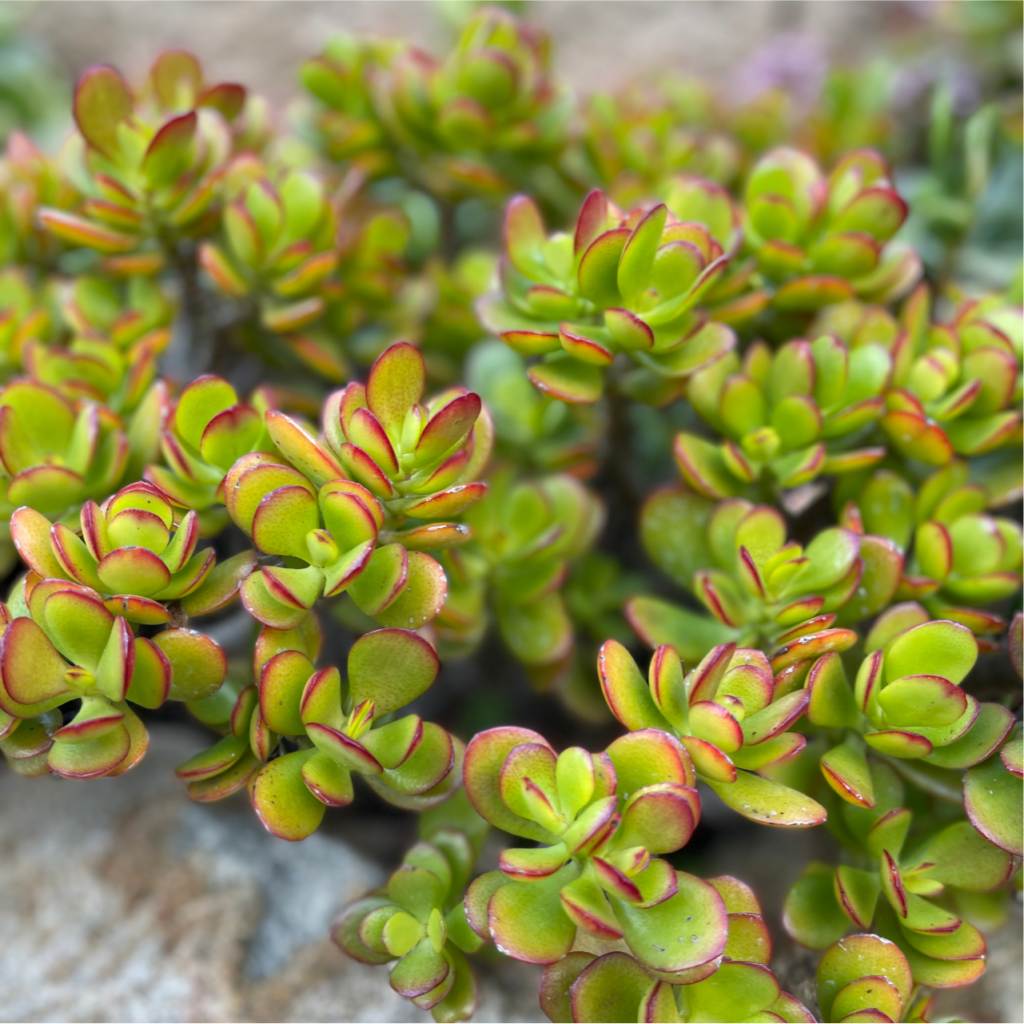

4. Pixie Jade (Crassula Ovata Pixie)
The adorable Pixie Jade (Crassula Ovata Pixie) is a dream houseplant for the green thumb enthusiast. This petite variety of Jade grows incredibly quickly and flowers repeatedly throughout its life! With oval-shaped green succulent foliage that looks like tiny beans. Plus deep pink buds that bloom in vibrant pink-white petals, this plant provides plenty of color and texture to nearly any space. It is perfect for sprucing up your home indoors or out! The perkiest of plants, it needs minimal maintenance and grows happily with occasional watering and bright direct sunlight exposure. So bring on the flower power with your very own Pixie Jade today!
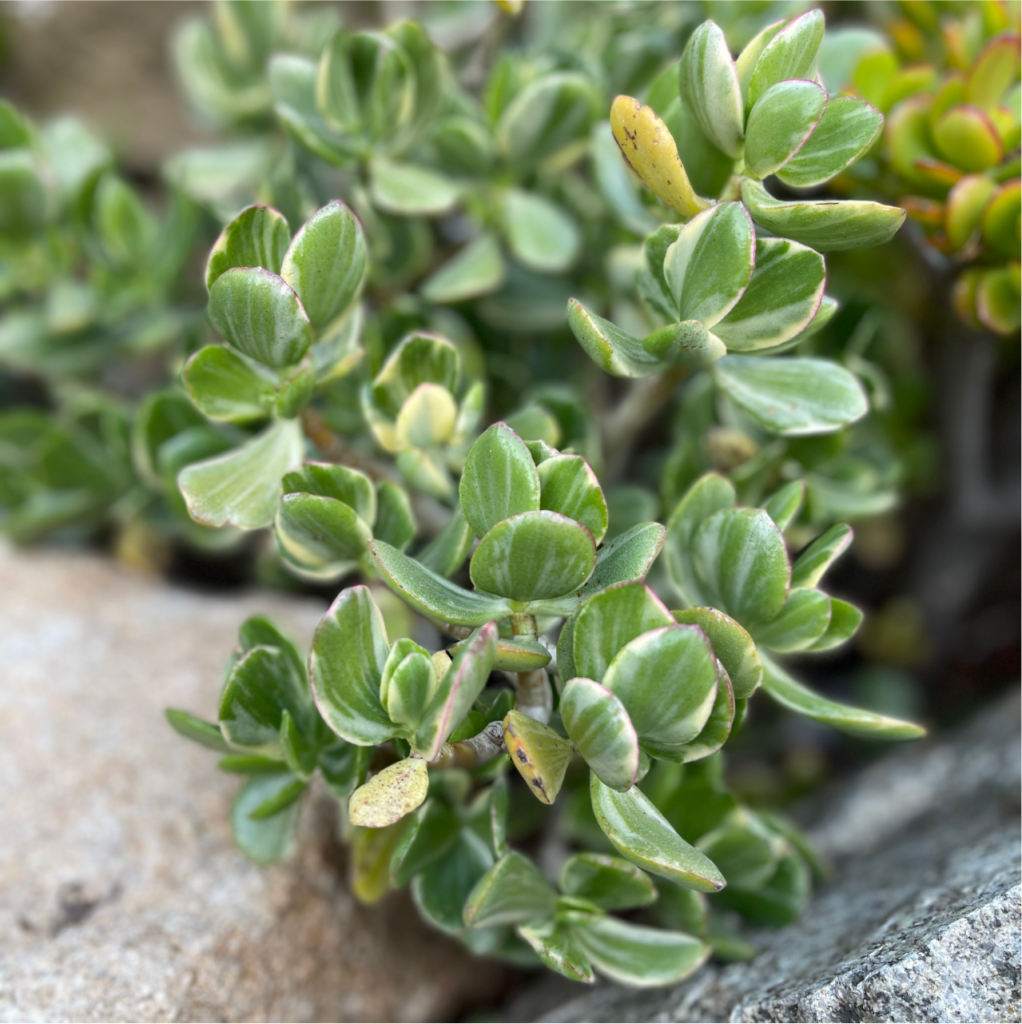

5. Lemon and Lime Jade (Crassula Ovata Variegata)
The Lemon and Lime Jade plant (commonly known as Crassula Ovata Variegata) is an incredibly unique addition to any home. It has a zesty personality with its variegated oval-shaped succulent leaves that have both creamy white and lime green stripes, resembling the vibrant color of freshly squeezed lemons and limes. This highly drought-tolerant plant is easy to care for, simply requiring bright light and minimal water for optimal growth. The profusion of zesty hues can provide any room or outdoor garden with an exciting pop of boldness and brightness, drawing attention to the unique beauty of this gorgeous succulent species. With proper care and love, you’ll be sure to enjoy the captivating visual charm of Lemon and Lime Jade!
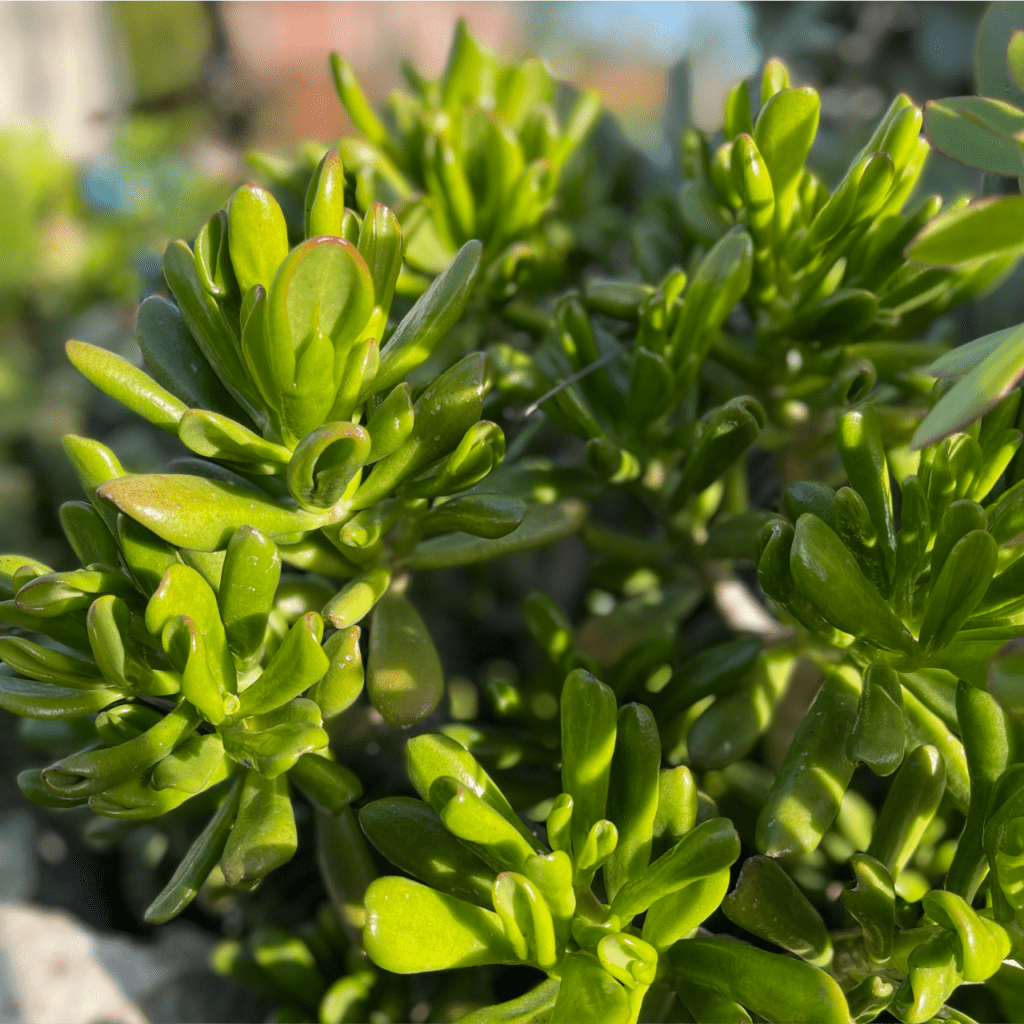

6. Hobbit toe Jade (Crassula Ovata Gollum)
The Hobbit Toe Jade (Crassula Ovata Gollum) may sound like a magical monster from a fairytale, but it’s actually a very interesting species of succulent.
As funny as its name might suggest, the hobbit jade is quite beautiful, with thick branches and a unique compact shape. When growing this plant outdoors or in ideal conditions, they produce clusters of small white and light pink flowers that stand out against their glossy green tubular leaves. And while this succulent is certainly captivating to look at, don’t let its unusual look fool you into believing it’s difficult to care for.
Hobbit Toe Jade prefers soil with adequate drainage and to be dryer side, they should only be watered when the soil is completely dry.
So consider inviting a hobbit to come live in your home today!
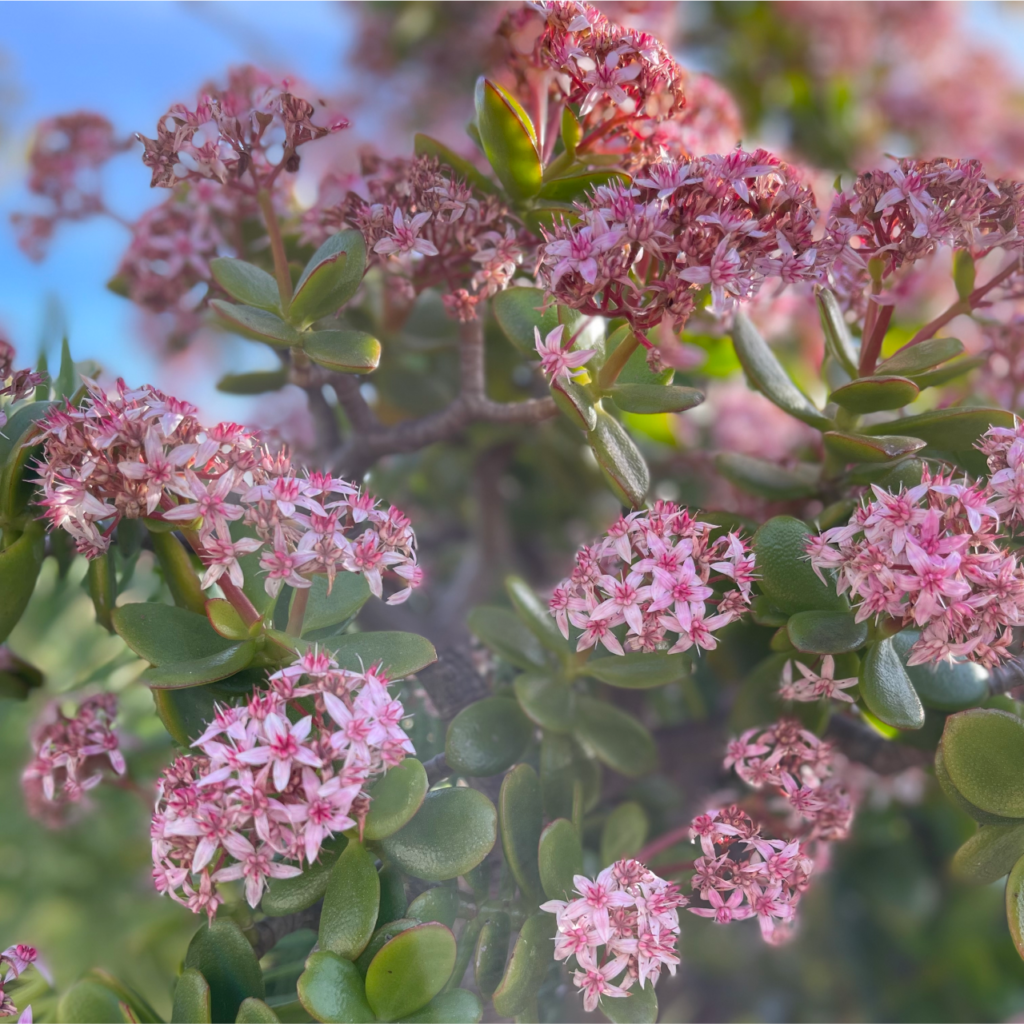

7. Pink flowering Jade (Crassula Ovata Pink)
Who doesn’t love when an ordinary but somewhat fascinating houseplant becomes even more extraordinary? That’s exactly the effect of Pink flowering Jade (Crassula Ovata Pink). With its unique-looking foliage, stunning clusters of rich pink star-shaped flowers and minimal maintenance needs, it’s no wonder this plant has become so popular recently.
Even if you don’t have the greenest of thumbs, it can decorate your home gracefully. It’s an easy-growing succulent that thrives in full sun or partial shade. Plant it in well-draining soil and give it water sparingly to enjoy its maximum beauty. Plus, its glossy foliage may attract some captivating creatures such as butterflies to your outdoor living space. To sum up, if you are looking for a low maintenance and long lasting living decoration for your interior design, Pink flowering Jade should be high on your list.
What to do when your Jade plants out-grow your indoor space?
Luckily Jade plants respond really well to being groomed or trimmed when needed. The stem cutting or pieces removed from the mother plant can easily be rooted to make new plants. And they make great gifts for your friends and families.
Secondly if you live in a temperate area and are looking for a low-maintenance addition to your outdoor patio or garden, moving your Jade Plant outdoors is a great option. They can be just as hardy outside as in if your environment is fitting. If not you will have to move them back indoors in the winter time.
